Since the death of his wife and artistic collaborator Jeanne-Claude in 2009, the Bulgarian artist Christo has kept a low public profile. For nearly 50 years, the duo worked together on their ambitious artistic interventions and, after Jeanne-Claude’s death, one wondered if The Gates (2005) in New York’s Central Park, would be the last of their large-scale projects to be realised. Yet in the past few years, with a renewed sense of urgency, Christo has been working on three projects simultaneously, and this June he will complete his first major project without Jeanne-Claude.
‘I became 80 years old in 2015, so now I like to do things very fast,’ Christo said at the opening of Galerie Gmurzynska’s current exhibition of his works-in-progress in St Moritz, where drawings of the Floating Piers project are on view until 30 March. Planned to coincide with the summer solstice on Italy’s Lake Iseo, The Floating Piers (2014–16) will consist of 70,000 square metres of yellow fabric forming a 3km walkway across the lake from Sulzano to Monte Isola to the smaller island of San Paolo. This project, which is a collaboration with critic and curator Germano Celant, artistic director of the Prada Foundation, will be Christo’s first project in Italy for 40 years. Work is already underway on the modular floating-deck system of 200,000 high-density polyethylene cubes. ‘In the past 50 years, Jeanne-Claude and I realised 22 projects and we failed to get permission for 37 projects. But those projects always stay in our hearts and that is the story for The Floating Piers,’ Christo says.
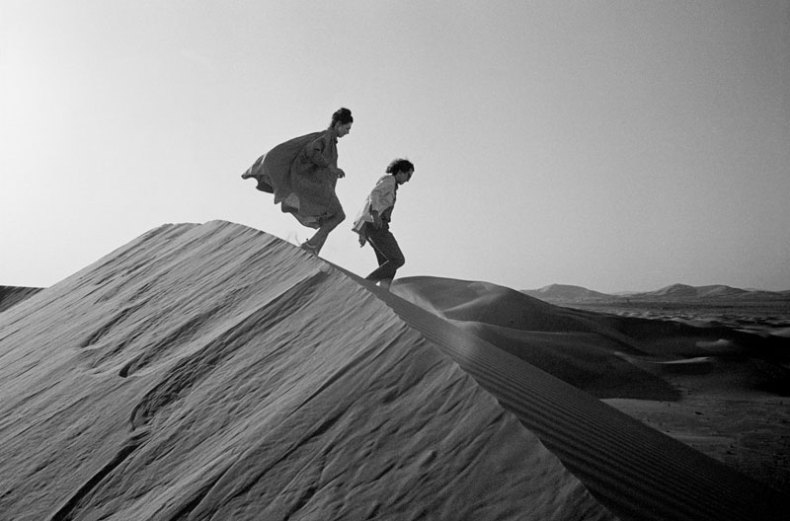
Christo and Jeanne-Claude looking for a possible site for The Mastaba, February 1982 Photo: Wolfgang Volz
Lake Iseo was chosen because Monte Isola, despite having 2,000 inhabitants, has no bridge to the mainland: ‘So this is the first time the people of the island can walk on water,’ Christo explains. The idea of walking on water is a long-held fascination. In 1977, the Floating Piers project was originally planned for the delta of Río de la Plata in Argentina, but failed to get permission. In the 1990s, they again tried and failed to do it in Tokyo Bay. In 2014, Christo returned to complete the task, now possible thanks to the invention of the floating-deck system, as a form of tribute to his late wife. Although Jeanne-Claude is not here to see The Floating Piers completed, Christo feels her presence: ‘Of course I miss her all the time, but I feel she is doing it with me. We worked on it for many years together and it was her idea: the idea of walking on water was very special to her.’
Christo’s projects are always a huge effort and, alongside the engineers, lawyers, and skilled workers involved in The Floating Piers, a further 600 workers will be required for its installation. As such a thing has never been done before, for both aesthetic and technical reasons he has already built a small life-size section of The Floating Piers in secret on a privately owned lake on the German–Danish border in September 2014.
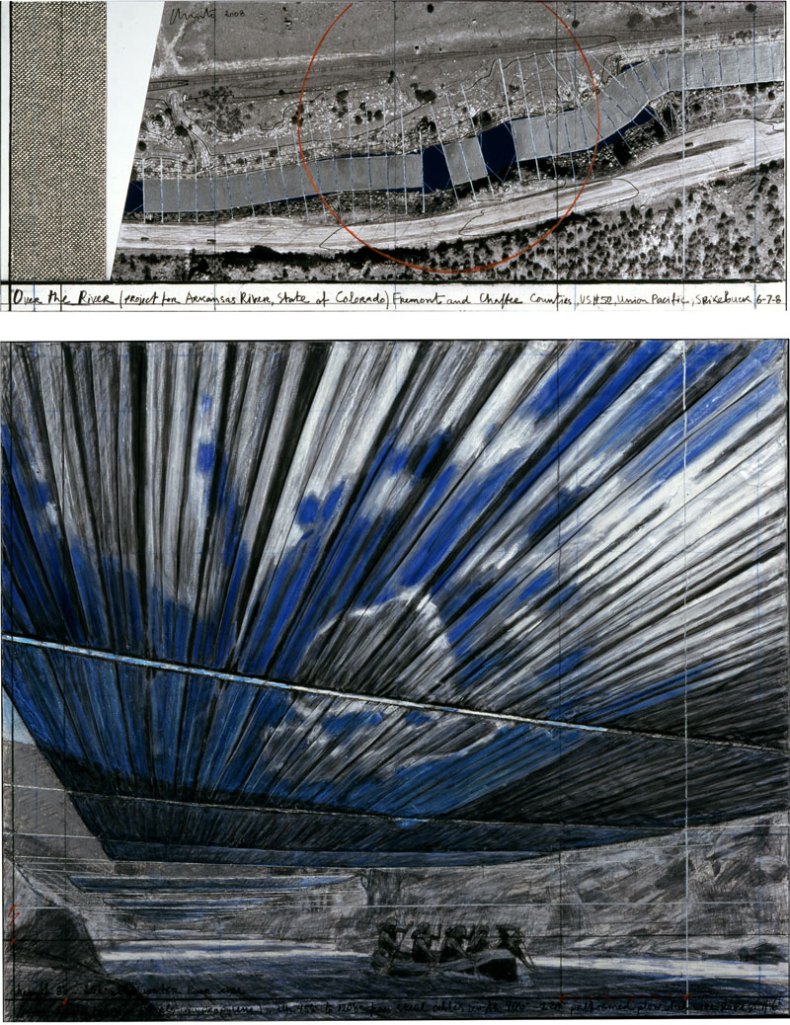
Over the River, (Project for the Arkansas River, State of Colorado) Christo, 2010 Courtesy Galerie Gmurzynska © Christo
A slight figure, still fizzing with energy, Christo has a devoted team. Photographer Wolfgang Volz, who has documented Christo’s projects for over 40 years, points out that since Christo will be 81 this year they are realistic about the number of projects they hope to realise. They are focusing on The Floating Piers alongside two others; Over the River, first conceived in 1992, which will suspend 5.9 miles of silver fabric panels over Colorado’s Arkansas River if the US courts give permission; and The Mastaba, an idea dating back to 1977 for a 150m-high sculpture made from oil barrels in the Abu Dhabi desert. It would be the largest sculpture in the world and also be Christo and Jeanne-Claude’s only permanent major work. While a site and consent are yet to be confirmed, Volz is ‘hopeful’ that The Mastaba will be realised; the promised income from increased tourism to the country will surely aid their case given the spiralling oil prices.
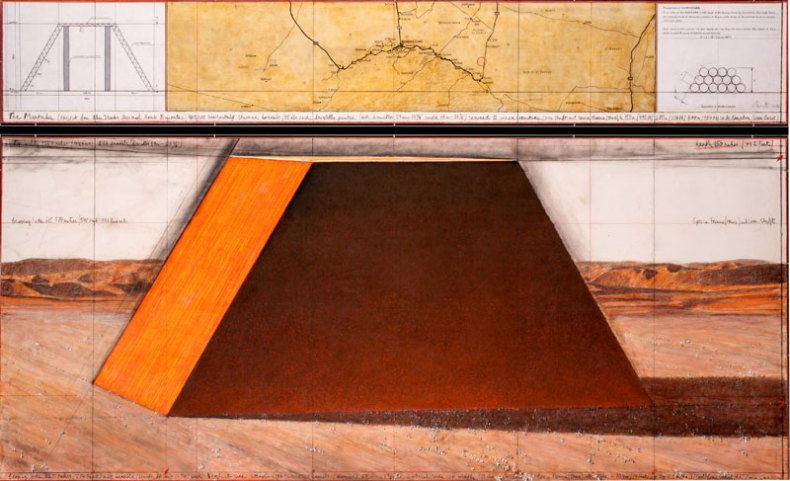
The Mastaba, (Project for Abu Dhabi, United Arab Emirates) Christo, 2013 Courtesy Galerie Gmurzynska © Christo
It is the mixed-media preparatory drawings for these three projects that are the subject of Gmurzynska’s show set on Via Serlas, the Swiss Alps’ snowier answer to Bond Street. The drawings are more fully worked than many of Christo and Jeanne-Claude’s early examples – richly textured and evocative, ambitious artworks in their own right. With prices between €200,000 and €1.2m, several sold on preview night. Though a lavish St Moritz opening may seem at odds with Christo’s egalitarian principles, sales here are crucial as the artist funds his projects entirely through selling these works-in-progress. Collectors become benefactors too, by purchasing what are the only lasting mementoes of Christo’s transient projects and also contributing to their realisation. Perhaps with their support and a little of that luck, Christo will create all three projects in his lifetime.
‘Christo & Jeanne-Claude: Works in Progress‘ is at Galerie Gmurzynska, St Moritz, until 30 March. Floating Piers will take place, weather permitting, from 18 June to 3 July on Lake Iseo, Italy.
Unlimited access from just $16 every 3 months
Subscribe to get unlimited and exclusive access to the top art stories, interviews and exhibition reviews.

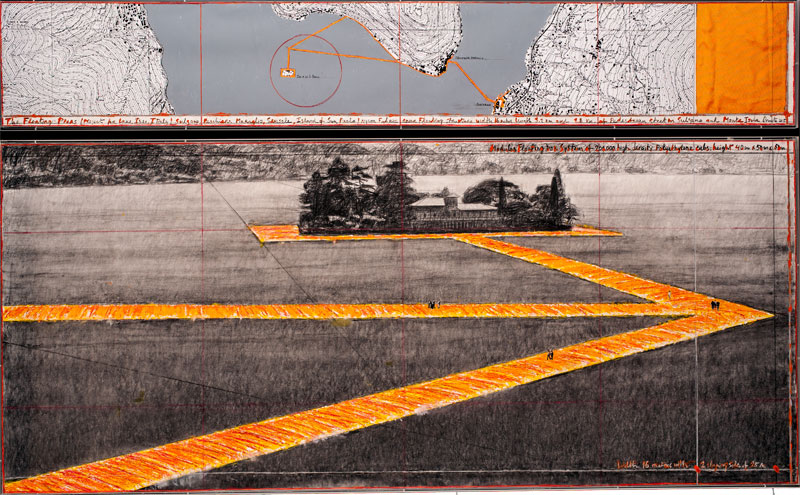
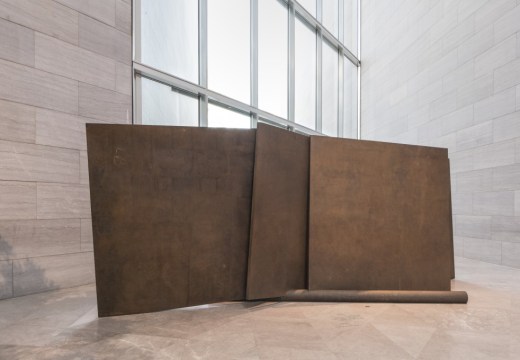
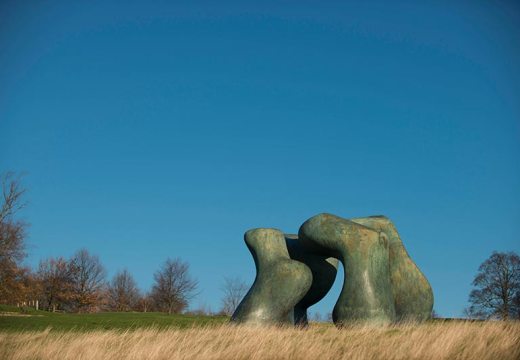
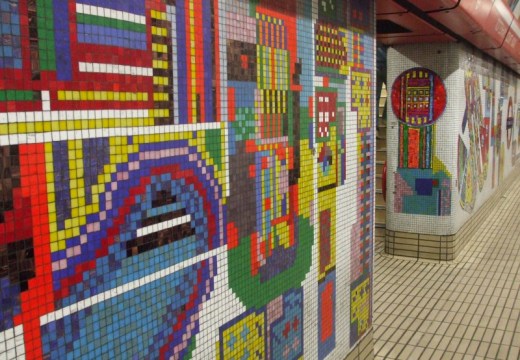









![Masterpiece [Re]discovery 2022. Photo: Ben Fisher Photography, courtesy of Masterpiece London](http://www.apollo-magazine.com/wp-content/uploads/2022/07/MPL2022_4263.jpg)
It’s time for the government of London to return to its rightful home